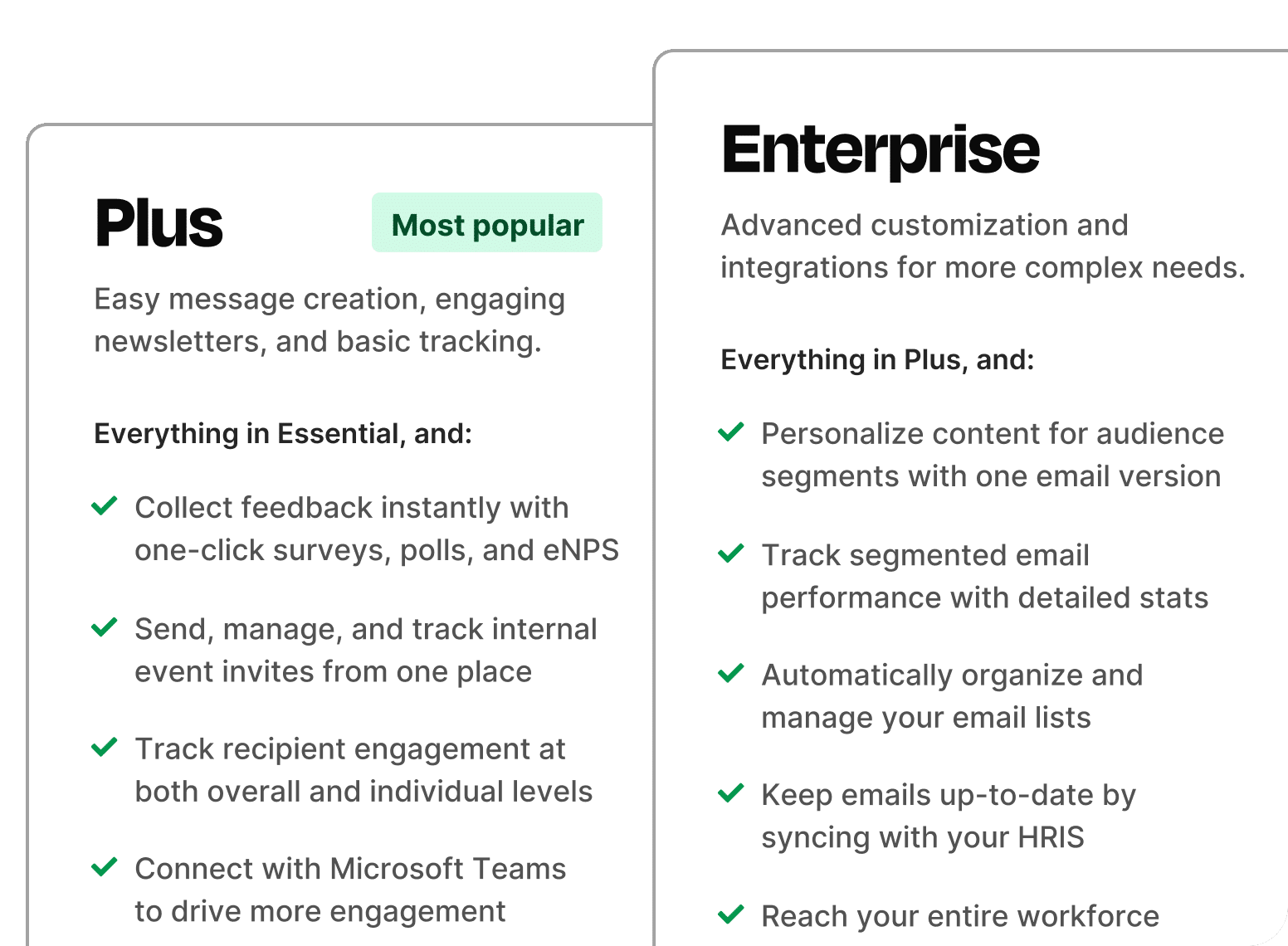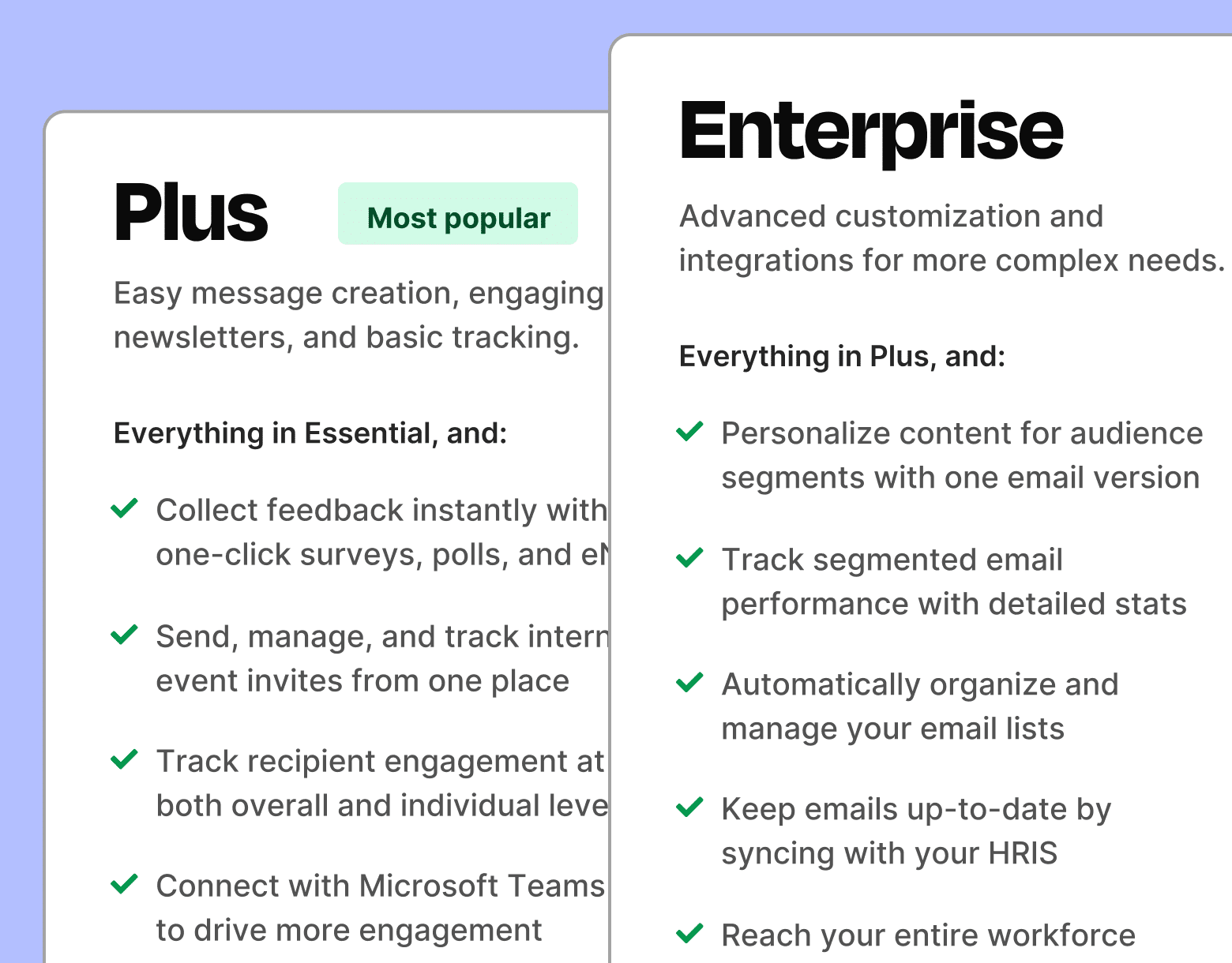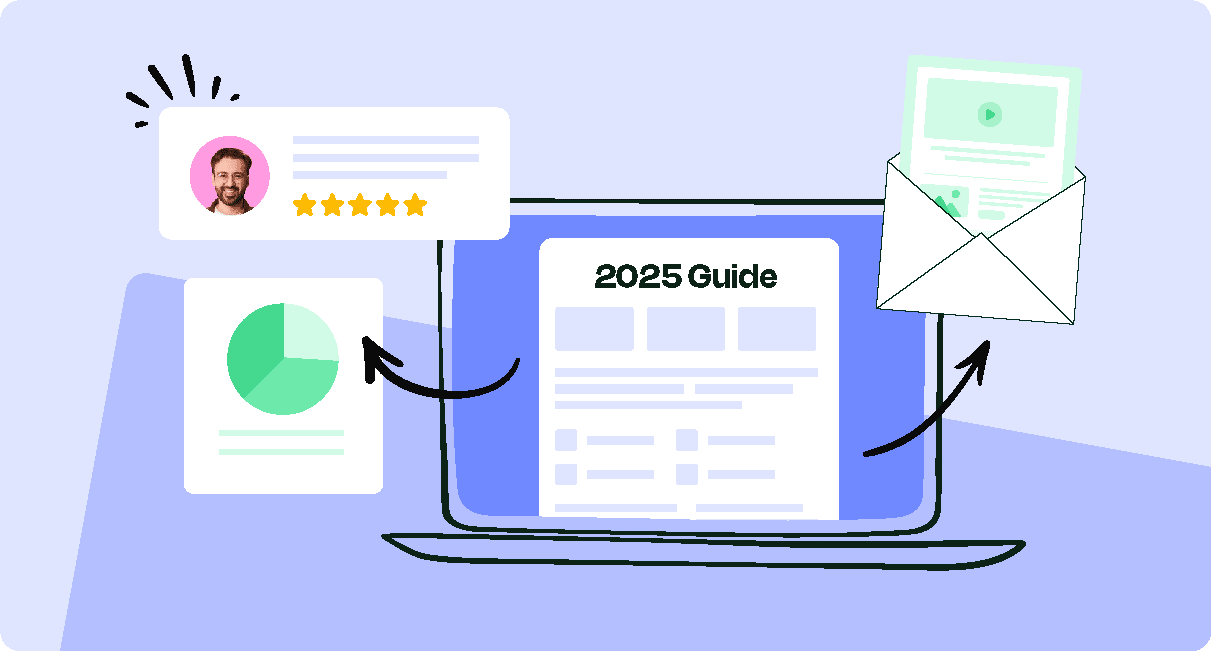Learn how to create an effective HR communication strategy to build trust, community, and collaboration in the workplace.
HR policies and updates can be complex and difficult to understand, especially for new employees.
An HR communications plan can help to ensure information reaches employees on time and in a simplified form to ensure that everyone understands the rules and expectations.
In this post, we’ll walk you through the steps of creating an effective HR communication strategy and break down the tools that can help you in the process.
Take a self-guided tour of ContactMonkey
See how our key features can streamline your internal communications.
Take product tour

What is HR Communication?
HR communication is the process of exchanging information between human resources teams and company employees, new recruits, job seekers, and other stakeholders.
HR communication can cover a wide range of topics—from job openings, employee training, upcoming internal comms events, and workplace policies. However, the overall goal of HR communications is to ensure that employees are aware of important policies, procedures, and benefits.
In today’s dispersed workplace, HR communications play a critical role in connecting all employees to key company information and promoting employee engagement and awareness.
ContactMonkey can help you connect and engage your workforce through intuitive email design and automation alongside precision analytics—all of which help align your HR department and internal communications.
The Benefits of Effective HR Communication Strategies
When HR communications are done well, the benefits extend from individual employee engagement to the success of business performance as a whole. Let’s break down some of the key benefits of effective HR communication:
- Improved employee engagement: Effective HR communications connect employees to professional development opportunities, events, and colleagues. In sum, they improve employees’ understanding of their role and future within the organization. This can increase employee engagement and motivation, which can boost productivity and reduce turnover rates.
- Increased transparency: Effective HR communication can promote transparency by keeping employees informed about company policies, decisions, and changes. This helps build trust between employees and management and reduces misunderstandings and conflicts.
- Better performance: Regular communication between HR and employees can help identify areas where employees need additional support or training. This leads to improved job performance, productivity, and overall job satisfaction. You can easily accomplish this by sending a simple training email to employees.
- Enhanced employer branding: Effective HR communication can help to create a positive image of the organization among employees and external stakeholders. This can enhance the employer brand and attract top talent to the organization.
- Improved compliance: HR communication can help ensure that employees understand and comply with company policies, as well as legal and regulatory requirements. That’s not insignificant because it can reduce the risk of legal issues and lawsuits.
- Better decision-making: When HR communicates effectively with employees, they can gather valuable feedback and insights to inform decision-making. This can lead to better decision-making for the business in the long run.
Take a self-guided tour of ContactMonkey
See how our key features can streamline your internal communications.
Take product tour

Types of HR Communication
HR communication is a broad category that encompasses many different types of communications—from employee onboarding to leadership communications. That’s because HR personnel deal with all sorts of company stakeholders, from job seekers to CEOs. With that in mind, let’s look at some of the most common types of HR communication:
- Onboarding communication: This type of HR communication is used to welcome new employees, provide them with training itineraries, and offer them all the essential information about the organization. You can also have the team members send out new employee introduction emails to make this process even smoother. That includes sharing resources on company culture, policies, procedures, benefits, and expectations. Onboarding communication can be delivered through emails, handbooks, orientation sessions, and other channels.
- Benefits communication: Communicating employee benefits, healthcare and retirement plans, and other perks is an important part of an HR professional’s role. This type of provide feedback to employees on their job performance, set goals, and develop performance improvement plans. Performance communication can include face-to-face meetings, performance reviews, and other feedback mechanisms. Communication can be delivered through emails, handbooks, and other channels.
- Compliance communication: HR will often need to communicate legal and regulatory requirements to employees and ensure staff are following company policies and procedures via anonymous comments and pulse surveys. Compliance communication can be shared through training sessions, emails, and other channels.
- Crisis communication: When emergencies strike, it’s important for HR professionals to use this type of communication to keep employees informed quickly. Crisis communication can be delivered through email, emergency SMS alerts via an employee text messaging system, or through other asynchronous communication channels.
- Career development communication: It’s part of an HR professional’s job to communicate career development opportunities, such as training programs, mentoring, and job postings. This type of communication can be delivered through emails, newsletters, and other channels.
- Employee engagement communication: HR can utilize this type of communication to promote company mixers, virtual town halls, and other events, updates, and ideas that contribute to a positive workplace culture. Employee engagement communication might be delivered through newsletters, social media, and other channels. It can and should also be tailored to different company locations, for instance, through the implementation of multilingual email best practices for international employees.
Upward communication
While HR communication can include various types of messaging, there are two main subcategories: upward and downward HR communication. Upward HR communication refers to the flow of information from employees to management or HR professionals. This type of communication allows employees to provide feedback, express concerns, and share ideas with their managers or HR representatives.
Downward communication
Downward HR communication refers to the flow of information from management or HR professionals to employees. This type of communication is used to provide information, instructions, and feedback to employees and to ensure that they are aware of company policies, procedures, and goals.
Cross-functional communications
Cross-functional HR communication is specifically concerned with the flow of information between different departments and roles within an organization. It can be a part of both upward and downward communications, but its goal is always to break down silos, promote collaboration, and ensure that everyone is working toward shared goals.
Planning an Effective HR Communication Strategy
Creating an effective HR communication plan isn’t necessarily difficult, but it does take some brainstorming and strategizing. Here are a few key steps to keep in mind when building out your first HR communication strategy:
1. Identify your communication objectives
The first step is to identify the objectives of the HR communication strategy. This may include goals such as improving employee engagement, increasing productivity, or reducing turnover.
If you’re not sure where to start, try conducting an employee pulse survey to see what parts of your HR communications employees like and dislike.
You can also use internal communications analytics to track when and across what channels or content types employees are most engaged and use these metrics to inform 5-8 key goals.
2. Understand the audience
Before you determine the direction you want to go with your HR communication strategy, it’s important to understand the needs and preferences of your target audience.
By monitoring email metrics using an internal communications tracking tool, you can identify audience trends, as well as their preferred communication styles and communication channel preferences.
For instance, with ContactMonkey’s segmented email analytics, you can determine which types of communications are popular across distinct departments, job titles, and even office locations.
3. Choose your channels
The next step is to choose the internal communication channels that will be used to deliver your HR communication messages. The future of email still looks bright but you might want to expand to new internal communication channels like employee SMS, while continuing to leverage email-embedded videos and virtual events as well.
Whichever channels you choose, leverage analytics to see how employees engage with those particular outlets and create tailored messages.
For instance, SMS is usually best for short, snappy meeting reminders or crisis communications. Meanwhile, an HTML newsletter might be the best channel for change management communications.


4. Create and prep relevant HR content
Once you’ve selected your main HR communication channels and identified which content works best for each, the next step is to create content templates.
For email, this might include pre-made templates for everything from employee appreciation emails to holiday communications. Templates make it easy to send out HR communications more quickly and in a consistent cadence.
If you’re using ContactMonkey’s email template builder, you’ll be able to create, share, and collaborate on email templates in minutes. You can also choose from dozens of pre-made email designs created by our talented visuals design team and instantly upload sample emails to adapt and send out in seconds.
5. Develop a communication schedule
Your HR communication strategy should include a schedule for delivering messages when and where employees need them. An HR internal communications planning calendar can help you organize events, regular newsletters, or create a timeline for specific projects or initiatives.
The most important thing to remember is this: meet your employees where they are. That means tapping into reader engagement analytics. With Gmail and Outlook email analytics tools, you can see not only which channels employees are most engaged on, but when employees are most active on a given platform.
ContactMonkey, for example, lets you see what time of the day employees are most likely to open your emails any time in the week. With this information, you can create a data-driven HR communications schedule and optimize email open rates and responses.
6. Measure and optimize HR communications
To make consistent improvements to your HR communications engagement rates, it’s necessary to continuously monitor performance. An HR communications audit will let you measure the effectiveness of your HR communication strategy through metrics such as open rates, clicks, and employee feedback.
All of these analytics are available with ContactMonkey’s employee communications software, along with data on reading times, the most popular email links, and the most engaged teams. These insights will help to identify areas for improvement and ensure that the strategy is meeting its objectives.
Implement a Data-Driven HR Communication Strategy With ContactMonkey
Developing a holistic HR communication strategy is essential for any organization that wants to build a strong and engaged workforce. With a clear plan that incorporates different communication channels and considers the needs and preferences of employees, HR professionals can improve engagement, retention, and overall organizational success.
Remember, communication is a two-way street, especially for internal communication vs external communication. So be sure to actively listen to and address employee feedback to continually improve your HR communication strategy. You can simplify the process with ContactMonkey’s interactive and data-driven corporate communication tool.Make data-driven decisions by tracking email opens in Outlook and Gmail to continually improve your strategy over time.
With intuitive email design, interactive communication capabilities, and segmented analytics, ContactMonkey helps you create content that’s tailored to your employees’ needs. Book a free demo and see ContactMonkey in action.




